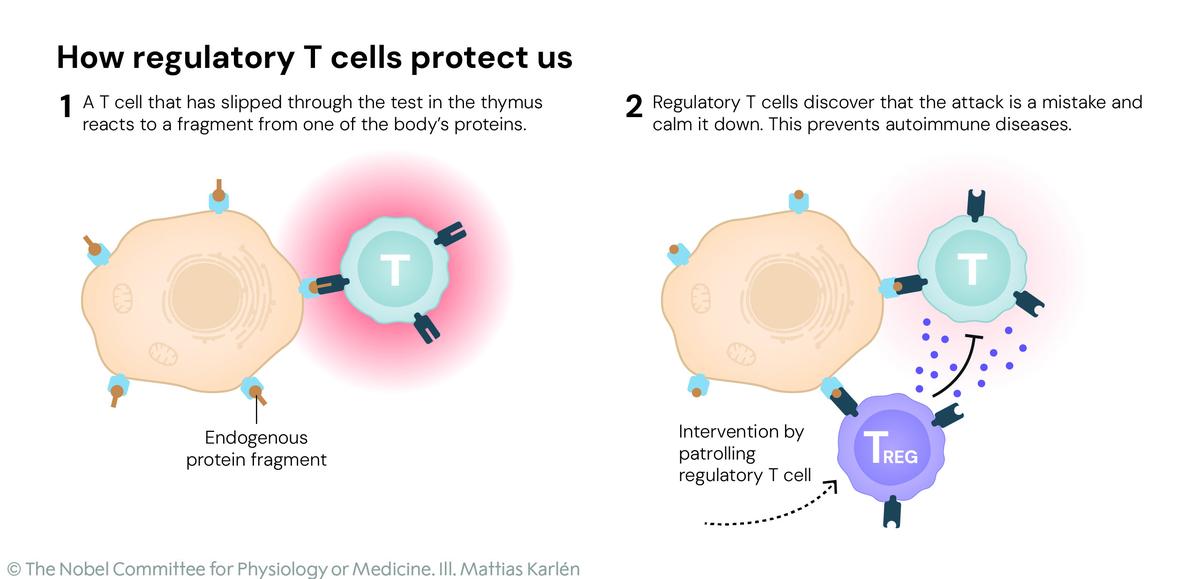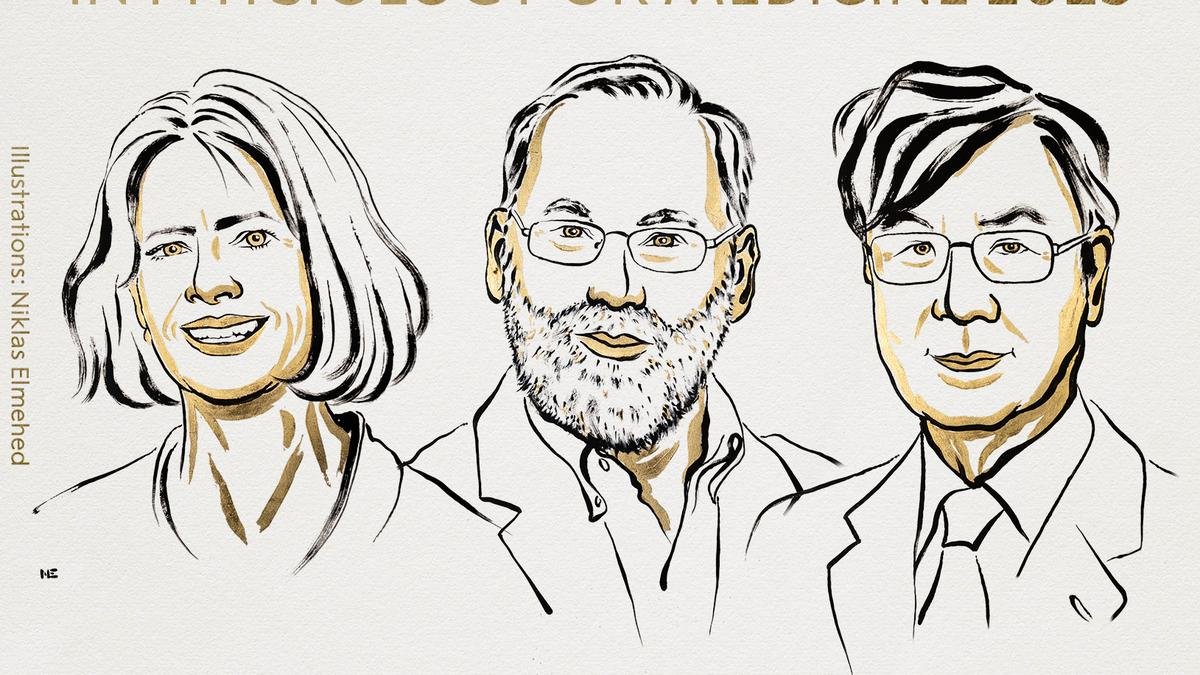
Mary E. Brunkow (US), Fred Ramsdell (US) and Shimon Sakaguchi (Japan) win Nobel medicine prize.
| Photo Credit: Courtesy: https://www.nobelprize.org/
The annual Nobel Week — when the world’s most prestigious prizes for scientific achievement are announced — kicked off Monday with three scientists — two Americans and one Japanese — sharing the Nobel Prize in Physiology or Medicine for unravelling tantalising aspects of the human immune system. Their discovery has helped blaze new paths into treating cancer as well as auto-immune disease – a condition by which the immune system ends up harming healthy cells they are meant to protect.
Our immune system is a complex of several kinds of cells – B cells, T cells, neutrophils, macrophages – that have a role in identifying and eliminating foreign bodies that may bring with it disease. However the immune system also identifies cells that have gone rogue – such as in cancerous tumours – or that have mutated in a way that they harm the bodies they constitute. Telling apart benign cells from harmful invaders is the key challenge the immune system must negotiate.
This year’s prize to Mary Brunkow, Fred Ramsdell and Shimon Sakaguchi was for discovering the mechanism and key constituents of so called ‘peripheral immune tolerance.’ The laureates identified the immune system’s security guards, regulatory T cells, which prevent immune cells from attacking our own body.
“Their discoveries have been decisive for our understanding of how the immune system functions and why we do not all develop serious autoimmune diseases,” Olle Kämpe, chair of the Nobel Committee, said in a statement.
Shimon Sakaguchi made the first key discovery in 1995. At the time, many researchers were convinced that immune tolerance only developed due to potentially harmful immune cells being eliminated through a process called central tolerance. Sakaguchi showed that the immune system is more complex and discovered a previously unknown class of immune cells, which protects the body from autoimmune diseases.

Illustrations: © The Nobel Committee for Physiology or Medicine.
Mary Brunkow and Fred Ramsdell made the other key discovery in 2001, when they presented the explanation for why a specific mouse strain was particularly vulnerable to autoimmune diseases. They had discovered that mice have a mutation in a gene that they named Foxp3. They also showed that mutations in the human equivalent of this gene triggered a serious autoimmune disease, IPEX.
Two years after this, Shimon Sakaguchi was able to link these discoveries. He proved that the Foxp3 gene governs the development of the cells he identified in 1995. These cells, now known as regulatory T cells, monitor other immune cells and ensure that our immune system tolerates our own tissues.
The laureates’ discoveries launched the field of peripheral tolerance, spurring the development of medical treatments for cancer and autoimmune diseases. This may also lead to more successful transplantations. Several of these treatments are now undergoing clinical trials.
At the time of their discoveries Dr Ramsdell was affiliated to Sonoma Biotherapeutics, San Fransisco, California, United States; Dr Brunkow with the Institute for Systems Biology, Seattle, Washington, U.S. and Dr Sakaguchi with the Osaka University, Osaka, Japan. They each share one-third of the 11 million Swedish kronor (₹1.03 crore) cash prize.
Published – October 06, 2025 03:02 pm IST

